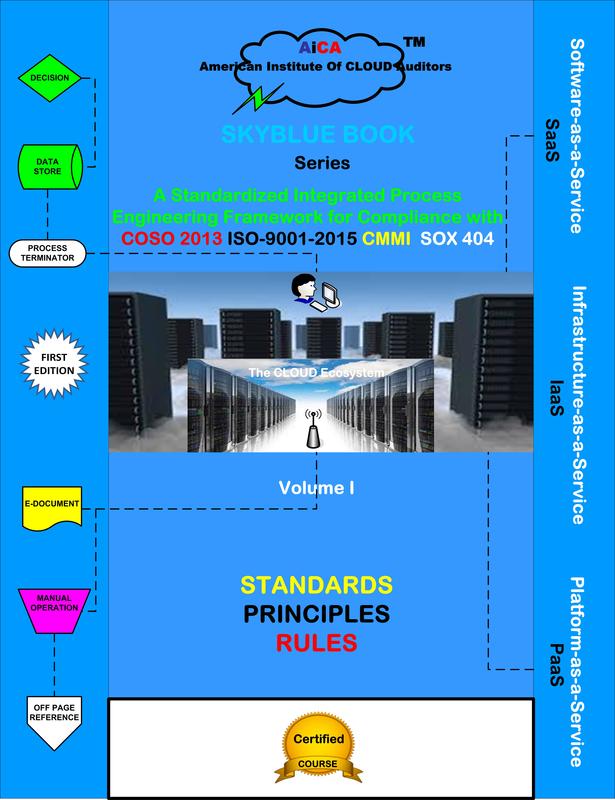Integrated Process Engineering and Auditing Solution for Compliance with Sarbanes-Oxley 404, AICPA SSAE & AT 101 Standards, the United Nations ISO 9001 Quality Management Standards, and the Software Engineering Institute (SEI) Capability Maturity Model Integration (CMMI) Standards was written to provide a comprehensive process design, engineering, and auditing solution that satisfies these and other prevailing national and international regulatory standards for system development and operations.
The IHD Methodology discussed in this book combines elements from COSO, AICPA SSAE 16 & AT 101, ISO 9001, and CMMI into a integrated methodology, which provides a single solution for compliance with these standards.
BACK COVER.................
The IHD Methodology discussed in this book combines elements from COSO, AICPA SSAE 16 & AT 101, ISO 9001, and CMMI into a integrated methodology, which provides a single solution for compliance with these standards.
BACK COVER.................
|
CHAPTER 1: History and Overview of Computing
CHAPTER 2: Pre-World War II Inventions CHAPTER 3: Post-World War II Inventions CHAPTER 4: Further Advancements in Information Technology CHAPTER 5: The Evolution of Computer Programming Technology CHAPTER 6: The Evolution of Computing Platforms CHAPTER 7: Computer Mainframe Platforms CHAPTER 8: Application Platforms, System Architecture, Networking, and Database Technologies CHAPTER 9: File System Technology CHAPTER 10: Database Management Systems (DBMS) CHAPTER 11: Server Technology CHAPTER 12: Networking Technology CHAPTER 13: ISO OSI Reference Model CHAPTER 14: Computer Protocol Technologies CHAPTER 15: Switching Technologies CHAPTER 16: The Public Network CHAPTER 17: Case Study of Mordern Computing Platforms CHAPTER 18: Sarbanes-Oxley (SOX) Overview CHAPTER 19: COSO Overview CHAPTER 20: Questions about Sarbanes-Oxley (SOX) |
CHAPTER 21: AICPA SSAE 16 & AT 101 Standards
CHAPTER 22: ISO 9001 Standards CHAPTER 23: Software Engineering Institute (SEI) Capability Maturity Model Integration (CMMI) Standards CHAPTER 24: The Need for an Integrated High Definition Methodology CHAPTER 25: Overview of the Integrated High Definition Methodology (IHD) CHAPTER 26: IHD Elements - Process Activity Definition CHAPTER 27: Practical Application of the IHD Methodology CHAPTER 28: Internal and Outsourced Technical Processes CHAPTER 29: Project Work Plan CHAPTER 30: Service Level Agreement CHAPTER 31: Organizational Charting CHAPTER 32: Process Analysis Matrix CHAPTER 33: Sample: Process and Resource Deficiency Matrix CHAPTER 34: IHD Process Template Definition CHAPTER 35: Comparison of IHD Methodology to Commonly Known Standards CHAPTER 36: Sarbanes-Oxley Standards CHAPTER 37: Internal Control Structure Definition CHAPTER 38: Business Control Considerations CHAPTER 39: Technical Control Considerations CHAPTER 40: Automated Workflow Platforms |
CHAPTER 41: Audit Planning and Management
CHAPTER 42: Scoping the Engagement CHAPTER 43: Risk Assessment and Management CHAPTER 44: Process Control Considerations CHAPTER 45: IHD Auditing Case Study CHAPTER 46: Business Operations CHAPTER 47: Relevant Aspects of the Control Environment CHAPTER 48: EDI and CLOUD Federation Gateway Services CHAPTER 49: System Conversion and Software Migration |

